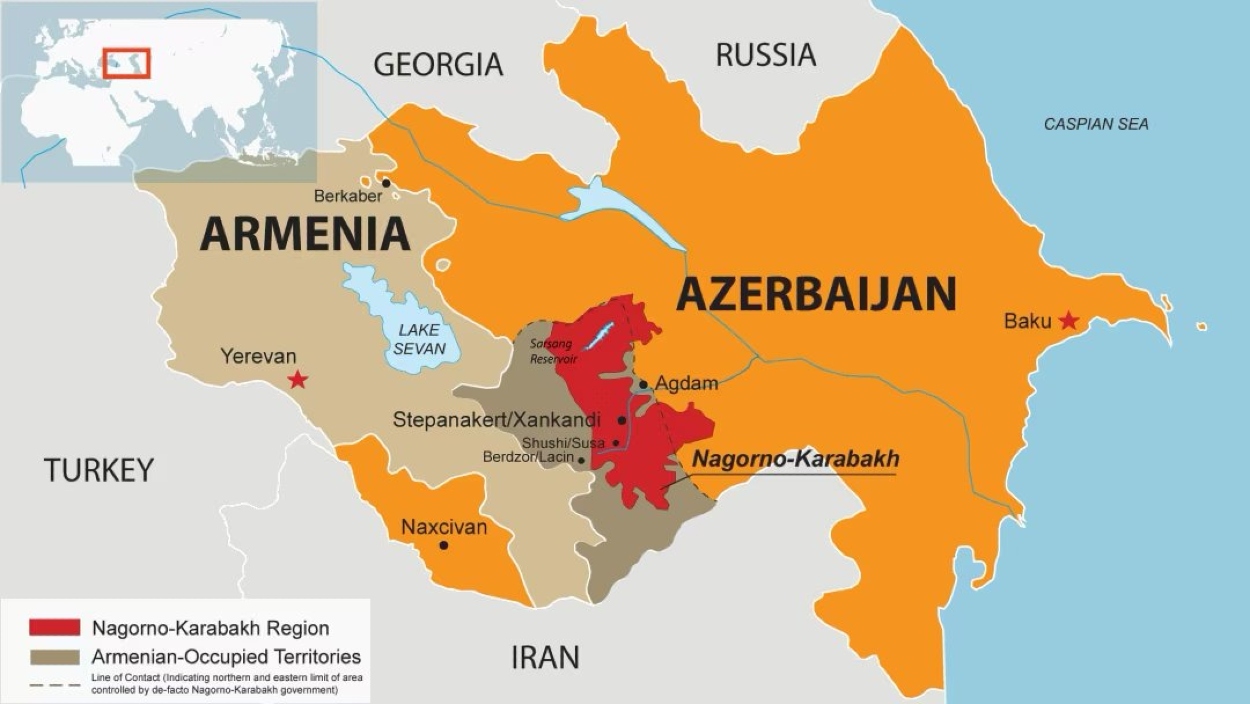After making it clear that France will not be sitting on the sidelines as war ravages Caucasian countries, French-made armored vehicles have reportedly been delivered to Armenia instead of Ukraine, as initially intended. France is now home to Europe’s most prominent Armenian diaspora community.
Armenia’s bolstered defense ties with the West and India have come at a time when it is decoupling with Russia, which remains preoccupied with its invasion of Ukraine. Most recently, Yerevan decided against attending events of the Collective Security Treaty Organization (CSTO) because it received no aid that it had requested during an Azerbaijani military incursion on its sovereign territory in May 2021.
The CSTO is a Russia-led inter-governmental security alliance of six post-Soviet states. The other members of CSTO, formed in 2002, are Armenia, Belarus, Kazakhstan, Kyrgyzstan, and Tajikistan.
According to a French media outlet, “The first confirmed delivery (to Armenia) is of Bastion light armored vehicles manufactured by the equipment manufacturer Arquus. The Bastion can carry a battle group of eight soldiers, protecting against small arms fire and mines.”
The report indicated that France could also supply 50 VAB MK3 armored vehicles manufactured by Renault Trucks Defense. It provides armed forces with high-level protection and multi-mission capabilities.
Georgian authorities confirmed that France dispatched ACMAT Bastion armored personnel carriers to Armenia via the Port of Poti, also verified by APM Terminals Poti to RFE/RL’s Georgian service.
Azerbaijan’s Foreign Ministry spokesman, Ayhan Hajizadeh, strongly criticized France’s supply of armored vehicles to Armenia. He expressed concern that this equipment transfer would bolster Armenia’s military strength.
The Bastion armored personnel carriers were initially intended to be supplied to Ukraine. But Kyiv rejected the 12.5-ton vehicles, contending they would be inadequately protected against artillery and anti-tank missiles. La Tribune had previously disclosed France’s plans to provide Kyiv with 20 Bastion vehicles in October 2022.
Following the declaration to bulwark Armenian defenses in October 2023, France has inked the deals for supplying Thales-manufactured Ground Master 200 (GM200) radars and signed a memorandum of understanding to deliver the Mistral short-range air defense system. According to France’s Ministry of the Armed Forces, a second contract was for Yerevan to acquire night vision goggles and equipment manufactured by Safran.
Speaking to reporters, French Defense Minister Sébastien Lecornu said that Armenia would buy three Ground Master 200 (GM200) radar systems from the French defense group Thales without providing financial details. The system, already used in Ukraine, is known for its “remarkable detection capabilities,” Lecornu asserted at a press conference alongside Armenian Defense Minister Suren Papikyan.
In the coming months, the French government will send a French military official to act as a defense consultant for the Armenian executive branch on issues such as armed forces training, Lecornu said. France will be training Armenian soldiers and helping Yerevan audit Armenia’s air defense to identify blind spots.
Armenia has almost doubled its defense investments over the last year. In 2022, the spending was around US$700 million to US$800 million; now, in 2024, it will be US$1.4 billion or US $1.5 billion.

The defense contracts with India alone account for a billion dollars. In the latest order, as reported by the EurAsian Times, Armenia contracted Zen Technologies for INR340 crore (US$41.5 million) for the anti-drone system that includes both training solutions and the system.
Armenia, a small landlocked nation nestled in the South Caucasus region of Eurasia, has emerged as a strategic partner for India. In 2022, when India inked the deal to supply Pinaka multi-barrel rocket launchers (MBRL), anti-tank munitions, and ammunition worth US$250 million to Armenia, it was seen as New Delhi taking a position in the conflict. It was the first export of PINAKA by India.
Armenia opted for Pinaka MBRLs, considered at par with the American HIMARs, for its shoot and scoot capability. The mobility is an advantage as adversary Azerbaijan has been deploying drones, including suicide drones.
Decoupling From Russia
For some time now, Yerevan has sought to diversify its arms imports and find new allies after Russia failed to provide the country with ordered weapons worth around US$400 million (it has not yet returned the money).
The failed arms deal was an additional trigger in the worsening Russia-Armenia relations, which made Armenia seek to diversify the sources of its arms imports, looking at the West and India.
The European Union has also discussed providing non-lethal military aid to Armenia. During its November 13 meeting, the EU Foreign Affairs Council deliberated on enhancing the EU monitoring mission by sending more observers and patrols to the Armenian border. The Council emphasized vigilance against destabilization in Armenia and warned Azerbaijan against compromising its territorial integrity.
Armenia stopped participating in CSTO events after the 2020 war when the CSTO said that Nagorno-Karabakh was not a sovereign part of Armenia and the organization had no mandate to deal with such issues.
The Armenian government has said, “Azerbaijani troops entered the sovereign territory of Armenia in May 2021. We turned to the CSTO for help and have not received it until now,” Secretary of the Armenian Security Council Armen Grigoryan said on November 15.
- Ritu Sharma has been a journalist for over a decade, writing on defense, foreign affairs, and nuclear technology.
- She can be reached at ritu.sharma (at) mail.com
- Follow EurAsian Times on Google News